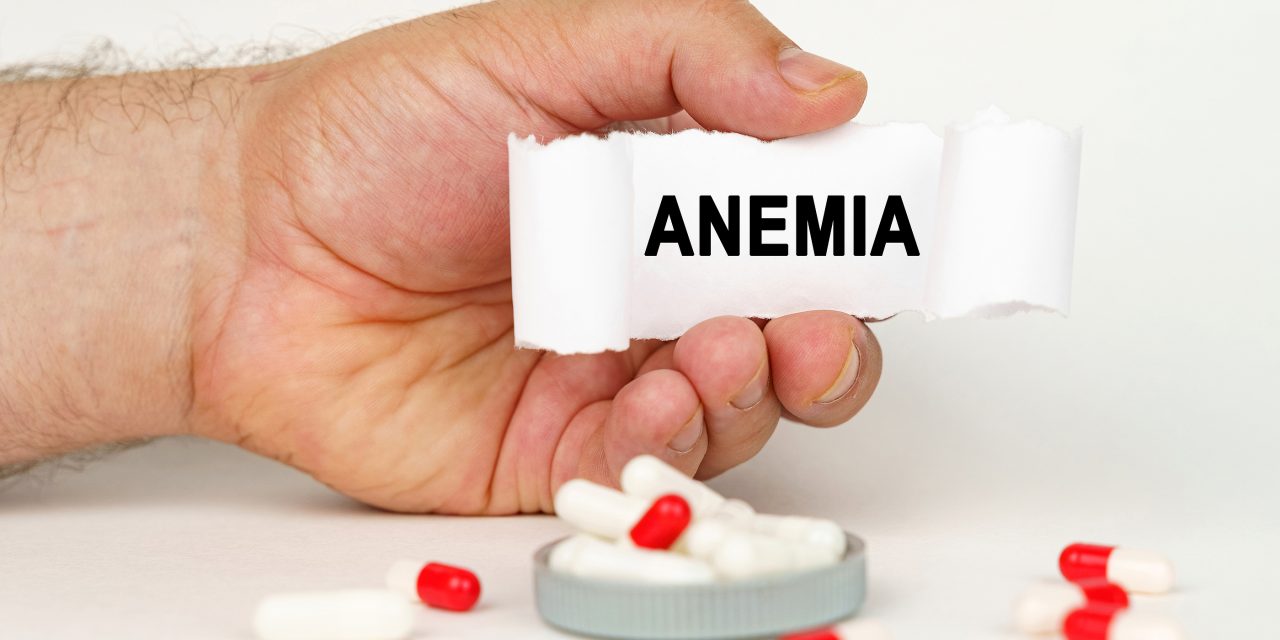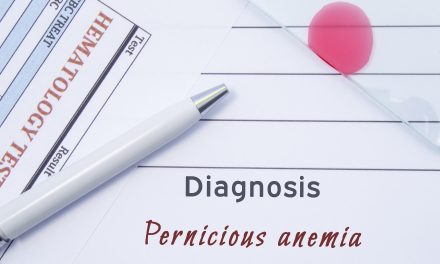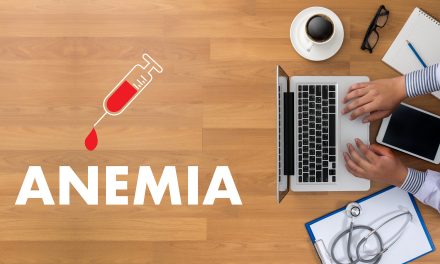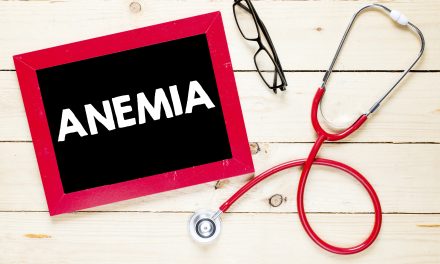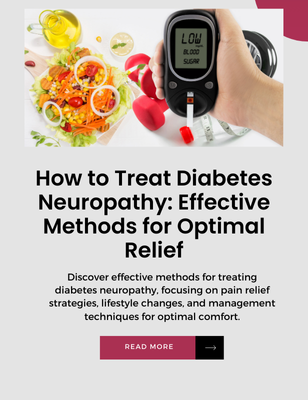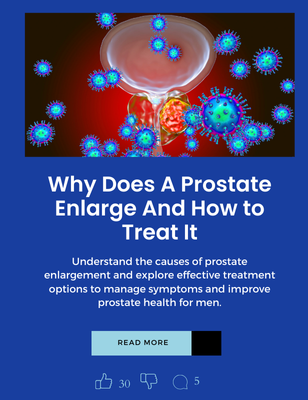Anemia is a medical condition characterized by a deficient number of red blood cells or hemoglobin in the blood, leading to a reduced oxygen-carrying capacity of the blood. Several types of anemia exist, each with its cause. Nutrition-related anemia, such as iron deficiency anemia, is common and can often be treated with dietary changes and supplements. Other forms may be more complex, requiring medical interventions or long-term management strategies.

Treatment for anemia is as varied as its causes. For instance, vitamin supplements might effectively address certain deficiencies, while other cases may necessitate prescription medications or even surgical procedures to resolve underlying issues. Understanding the specific type and cause of anemia is essential for an effective cure, which makes accurate diagnosis and personalized treatment plans crucial. Moreover, managing anemia often involves lifestyle adjustments, home remedies, and proactive strategies to prevent the condition from recurring or worsening.
Key Takeaways
- Identifying the type of anemia is crucial to determining the appropriate treatment.
- Dietary changes and supplements are common interventions for nutrition-related anemia.
- Long-term management may include lifestyle adaptations and regular monitoring.
Understanding Anemia
Anemia is a condition characterized by a deficiency in the quantity or function of red blood cells. This section explores its definition, the various types, and the potential causes.
Defining Anemia
Anemia occurs when the blood lacks enough healthy red blood cells or hemoglobin, which is responsible for transporting oxygen throughout the body. The key symptoms often include fatigue and weakness due to inadequate oxygen delivery to tissues.
Types of Anemia
Anemia is classified into several types, mainly based on its cause:
- Iron-deficiency anemia: Caused by a shortage of iron in the body.
- Vitamin-deficiency anemia: Results from insufficient intake or absorption of vitamin B12 and folate.
- Chronic disease anemia: Often associated with a long-term medical condition like cancer or kidney disease.
- Aplastic anemia: A rare, life-threatening condition where the bone marrow doesn’t produce enough new blood cells.
- Hemolytic anemia: Occurs when red blood cells are destroyed faster than they can be made.
- Sickle cell anemia: A hereditary form of anemia where red blood cells become rigid and sickle-shaped.
Causes of Anemia
Anemia can arise from numerous factors, which may vary by type:
- Nutritional deficiencies: A lack of essential nutrients like iron, vitamin B12, or folate.
- Blood loss: Significant bleeding, for example, due to surgery or menstrual bleeding, can deplete red blood cell counts.
- Genetic factors: Conditions like sickle cell anemia or thalassemia are inherited.
- Medical conditions: Chronic diseases, such as HIV/AIDS, rheumatoid arthritis, or cancer, can interfere with red blood cell production.
- Bone marrow and stem cell problems: These can affect the body’s ability to produce red blood cells adequately.
Symptoms of Anemia
Anemia is characterized by a decrease in the number of red blood cells or hemoglobin, which leads to several signs and symptoms. Early detection is vital for effective treatment.
Common Symptoms
- Fatigue: Individuals often feel unusually tired due to insufficient oxygen delivery to tissues.
- Weakness: There may be a general feeling of weakness, making daily activities difficult.
- Pale or Yellowish Skin: Reduced hemoglobin can cause the skin to lose its normal color.
- Shortness of Breath: Even minimal exertion can lead to difficulty breathing.
- Dizziness or Lightheadedness: A lack of red blood cells may lead to feeling faint, especially upon standing up.
- Cold Hands and Feet: Impaired circulation can make extremities feel cold.
- Headaches: Insufficient oxygen delivery to the brain can result in frequent headaches.
Identifying Severe Anemia
- Chest Pain: This can occur if the heart is struggling to deliver enough oxygen to the body.
- Rapid or Irregular Heartbeat: The heart may compensate for the lack of oxygen by beating more quickly or irregularly.
- Swelling or Pain in the Extremities: Severe anemia can lead to problems with circulation, causing discomfort.
- Severe Fatigue and Weakness: These symptoms can become debilitating.
- Cognitive Problems: Concentration and focus can be impaired due to reduced oxygen supply to the brain.
Diagnosis of Anemia
Accurate diagnosis is crucial for the successful treatment of anemia. It begins with a comprehensive medical history and physical exam, followed by specific blood tests to confirm the diagnosis and identify the type of anemia.
Medical History and Physical Exam
A patient’s medical history provides essential clues that may suggest anemia. Healthcare professionals inquire about symptoms such as fatigue, weakness, and pallor. They also review the patient’s diet, family history of blood disorders, and any medications or existing conditions that could affect red blood cell production. During the physical exam, they may check for signs like a rapid heartbeat, pale or yellowish skin, and enlargement of the liver or spleen.
Blood Tests and Results
Blood tests play a pivotal role in diagnosing anemia. The primary test is the complete blood count (CBC), which provides detailed information about the levels of different blood components. It includes:
- Hemoglobin (Hb): Reflects the amount of oxygen-carrying protein in the red blood cells.
| Normal Range | Men: 13.8 to 17.2 g/dL | Women: 12.1 to 15.1 g/dL |
|---|---|---|
| Anemia Threshold | Men: <13.8 g/dL | Women: <12.1 g/dL |
- Hematocrit (Hct): Measures the volume of red blood cells as a percentage of total blood volume.
- Men: 40.7% to 50.3%
- Women: 36.1% to 44.3%
- Mean corpuscular volume (MCV): Indicates the average size of red blood cells and helps categorize anemia as microcytic, normocytic, or macrocytic.
Other tests that may be ordered include:
- Iron levels, ferritin, and total iron-binding capacity (TIBC) to assess for iron-deficiency anemia.
- Vitamin B12 and folate tests for anemias related to nutrient deficiencies.
- Reticulocyte count to determine the bone marrow’s response to anemia.
Blood test results guide the next steps in management, such as further specialized testing or the initiation of treatment.
Nutritional Recommendations
Nutrition plays a pivotal role in the management and treatment of anemia. The emphasis is on a balanced intake of iron-rich foods and necessary vitamins to aid in the absorption of iron.
Iron-Rich Diet
An individual should consume a diet high in iron to address iron deficiency anemia. It is essential to focus on both heme and non-heme iron sources for effective treatment.
Heme iron (found in animal products) includes:
- Red meat (beef, lamb)
- Poultry (chicken, turkey)
- Seafood (oysters, clams)
Non-heme iron (found in plant-based foods) includes:
- Legumes (beans, lentils, chickpeas)
- Dark leafy greens (spinach, kale)
- Fortified cereals and grains
It’s important to pair non-heme iron sources with vitamin C-rich foods like oranges or bell peppers to enhance iron absorption.
Vitamin Supplementation
Vitamins are crucial for the proper absorption of iron. Supplementation may be necessary when dietary intake is insufficient or when the body requires additional nutrients for iron uptake.
Key vitamins for anemia treatment are:
- Vitamin C: Aids in the absorption of non-heme iron.
- Sources: citrus fruits, strawberries, kiwifruit, broccoli, tomatoes
- Vitamin B12 and Folic Acid: Essential for red blood cell production.
- Sources for B12: animal products like meat, dairy, and eggs
- Sources for Folic Acid: leafy greens, nuts, beans, and fortified foods
Supplementation should be guided by a healthcare provider to ensure it’s tailored to individual dietary needs and health status.
Medical Treatments
The management of anemia involves several medical treatments tailored to the specific type and cause of the condition. These treatments aim to increase the red blood cell count or the hemoglobin level within those cells to improve oxygen delivery to the body’s tissues.
Medication Options
Iron Supplements:
- Most common for iron-deficiency anemia
- Available in oral forms (tablets, capsules) or intravenous delivery for those who cannot tolerate oral iron
Vitamin Supplements:
- Vitamin B12 injections for pernicious anemia
- Folic acid supplements for folate deficiency
Erythropoiesis-Stimulating Agents (ESAs):
- Used for anemia related to chronic kidney disease or chemotherapy
- Stimulates the bone marrow to produce more red blood cells
Blood Transfusions
Red Blood Cell Transfusions:
- Quick method to increase red blood cell count
- Indicated for significant anemia causing symptoms or when hemoglobin levels are critically low
Risks and Monitoring:
- Potential for immunological reactions or infections
- Careful matching of the blood type and cross-matching tests are mandatory
Bone Marrow Therapy
Bone Marrow Transplant:
- Considered for severe aplastic anemia or anemias due to bone marrow failure
- Involves transplanting healthy stem cells to restore normal blood cell production
Stem Cell Therapy:
- Less invasive than bone marrow transplant
- Stem cells are infused into the bloodstream to enable new blood cell generation in the bone marrow
Home Remedies
When addressing anemia through home remedies, one primarily focuses on dietary adjustments and the inclusion of natural supplements to boost iron levels and improve overall blood health.
Dietary Adjustments
Individuals can manage anemia by incorporating iron-rich foods into their diet. They should aim to include:
- Meat and Fish: Beef, chicken, clams, and oysters are good sources of heme iron, which is readily absorbed by the body.
- Vegetarian Options: Beans, lentils, tofu, and spinach provide non-heme iron; to enhance absorption, consume them with vitamin C-rich foods like oranges or bell peppers.
Natural Supplements
Apart from diet, certain supplements can be beneficial:
- Iron: Essential for anemia treatment, but must be taken as per a healthcare provider’s recommendation to avoid overdose.
- Vitamin C: It aids in the absorption of iron from the gastrointestinal tract when taken together with iron supplements.
- Folate and Vitamin B12: Necessary for the production of healthy red blood cells. They can be found in various over-the-counter supplements.
Lifestyle Changes
Making positive lifestyle adjustments can significantly support the treatment of anemia. They should focus on enhancing physical health through appropriate exercise and ensuring sufficient rest to help the body recover and build new blood cells.
Exercise and Activity Levels
Individuals with anemia are encouraged to engage in moderate physical activity. Regular exercise like walking or swimming can help stimulate the production of red blood cells. However, it’s important to tailor the exercise routine to one’s endurance levels and to avoid overexertion.
| Activity Type | Benefit |
|---|---|
| Aerobic | Increases heart rate and improves circulation |
| Resistance | Encourages muscle strength without undue stress |
Managing Stress and Sleep
Managing stress is crucial for those with anemia, as chronic stress can negatively impact the immune system and the body’s ability to produce red blood cells. Techniques such as deep breathing, meditation, or yoga are recommended.
Adequate sleep is equally important; adults should aim for 7-9 hours per night. A regular sleep schedule helps regulate the body’s internal processes, including the production of red blood cells.
| Sleep Hygiene Practice | Purpose |
|---|---|
| Consistent Sleep Schedule | Regularizes the body’s production cycle |
| Reducing Screen Time Before Bed | Lowers mental stimulation to aid in sleep onset |
Monitoring and Follow-up
Effective management of anemia involves consistent monitoring and follow-up to ensure treatment efficacy and to adjust protocols as necessary.
Regular Blood Work
Regular blood work is essential to monitor hemoglobin levels, red blood cell count, and other relevant blood parameters. Patients should expect the following:
- Frequency: Typically every 3 to 6 months, but may vary based on the underlying cause of anemia and treatment response.
- Key Tests: Complete blood count (CBC), ferritin levels, and reticulocyte count.
Doctor’s Visits
Regular visits to the healthcare provider are critical for assessing symptoms and treatment progress. During these visits:
- Physicians will review blood work results.
- Treatment plans may be adjusted according to patient response.
- Symptoms and side effects will be discussed to tailor patient care.
Visitation schedules can vary greatly based on the severity of the anemia and the individual’s overall health status.
Complications and Management
Managing anemia effectively is crucial to prevent potential complications. Thorough understanding and implementation of appropriate management strategies can mitigate risks associated with chronic anemia.
Recognizing Complications
Complications from anemia arise when the body’s tissues and organs do not receive adequate oxygen. These may include:
- Heart problems: Chronic anemia can lead to arrhythmias, heart murmurs, or even heart failure.
- Developmental delays in children: Insufficient oxygen supply can affect growth and development.
- Pregnancy complications: Anemia increases the risk of preterm delivery and low birth weight.
To recognize complications early, patients should watch for symptoms such as:
- Increased fatigue and weakness
- Shortness of breath
- Irregular heartbeats
- Cognitive problems
Routine check-ups with healthcare providers are essential for early detection and management of complications.
Chronic Anemia Management
Chronic anemia requires a structured management plan that may include:
- Iron supplementation: For iron deficiency anemia, oral iron supplements or intravenous iron may be recommended.
- Vitamin B12 and folic acid supplements: For anemias related to deficiencies in these vitamins.
- Medications: Erythropoiesis-stimulating agents to promote red blood cell production.
- Blood transfusions: Essential when anemia is severe and causing symptoms.
- Dietary modifications: A balanced diet rich in iron, vitamin B12, folic acid, and vitamin C to enhance absorption is advised.
A healthcare provider should supervise the management of chronic anemia, tailoring treatment to individual patient needs. Follow-ups are essential to monitor the anemia’s progression and effectiveness of treatment.
Prevention Strategies
To effectively prevent anemia, one must prioritize nutritional choices conducive to maintaining healthy iron levels and be vigilant in monitoring for signs of the condition to ensure early intervention.
Preventive Nutrition
A balanced diet is crucial for preventing iron deficiency anemia. It should include:
- Iron-rich Foods: Incorporate a variety of heme iron sources such as:
- Red meats (e.g., beef, lamb)
- Poultry (e.g., chicken, turkey)
- Fish (e.g., tuna, salmon)
Non-heme iron sources are also important, especially for vegetarians and vegans, such as:
- Legumes (e.g., lentils, chickpeas)
- Leafy greens (e.g., spinach, kale)
- Iron-fortified cereals and breads
- Vitamin C: Enhance iron absorption with foods rich in vitamin C, like oranges, strawberries, and bell peppers.
- Moderate Consumption of Inhibitors: Limit foods that can hinder iron absorption, such as:
- High-calcium foods (e.g., milk, cheese)
- Certain plant compounds found in tea and coffee
Early Detection and Treatment
Routine screening for anemia is important, especially for those at higher risk, such as:
- Women: Due to menstruation and the demands of pregnancy.
- Infants and Children: Rapid growth can increase iron requirements.
- Those with Chronic Diseases: Conditions like renal disease can affect iron levels.
When iron deficiency is suspected, one should:
- Seek Testing: A complete blood count (CBC) can diagnose anemia.
- Treatment: If diagnosed, iron supplements and dietary adjustments can be effective.
Prompt treatment of anemia can prevent complications and improve quality of life.
Frequently Asked Questions
This section addresses common inquiries about anemia, its treatments, dietary adjustments, and expected recovery timelines for those seeking to understand this condition better.
What are the most effective treatments for anemia?
The effectiveness of anemia treatments depends on the type and cause. Iron deficiency anemia is commonly treated with iron supplements and dietary changes. Vitamin deficiency anemias may require B12 injections or folic acid supplementation. Chronic diseases require treating the underlying condition.
Can anemia be completely cured or only managed?
Some types of anemia, such as those caused by iron or vitamin deficiencies, can often be cured with appropriate treatment. However, anemia caused by chronic diseases or genetic disorders might only be managed, not cured.
Which dietary changes can improve anemia symptoms?
Dietary changes that can improve anemia symptoms include increasing intake of iron-rich foods like lean meats, beans, and leafy greens, as well as foods high in vitamin C to enhance iron absorption. For vitamin-related anemias, incorporating B12 or folic acid-rich foods is beneficial.
What are the leading causes of anemic conditions?
The leading causes of anemia include iron deficiency, vitamin deficiencies (especially B12 and folate), chronic diseases (like kidney disease), and genetic disorders (such as sickle cell anemia or thalassemia).
How quickly can one expect to see improvements in anemia after treatment begins?
Improvements in anemia symptoms can be seen as early as 2 to 3 weeks after starting treatment for iron deficiency anemia. For other types, response times may vary based on the severity of the condition and the effectiveness of the treatment administered.
What are common iron-rich foods that can help combat anemia?
Common iron-rich foods include red meat, poultry, seafood, beans, dark leafy vegetables like spinach, and iron-fortified cereals and breads. Pairing these with vitamin C-rich foods can help enhance iron absorption.
Conclusion
Effective strategies for restoring iron balance and curing anemia include consuming iron-rich foods, taking iron supplements as prescribed, and addressing any underlying health conditions contributing to the anemia. It is crucial to work closely with a healthcare professional to develop a personalized treatment plan tailored to individual needs, ensuring long-term iron balance and overall well-being.

